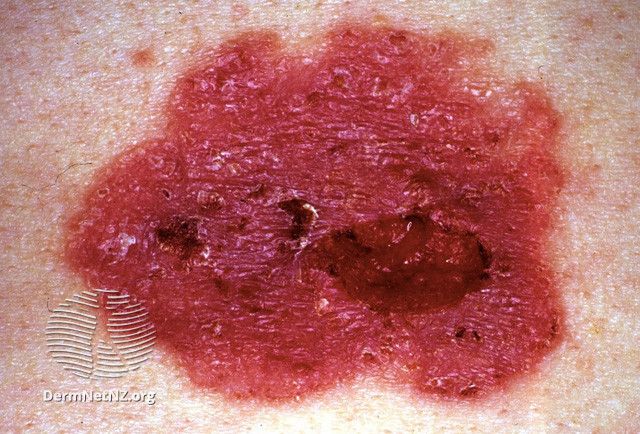- Case-Based Roundtable
- General Dermatology
- Eczema
- Chronic Hand Eczema
- Alopecia
- Aesthetics
- Vitiligo
- COVID-19
- Actinic Keratosis
- Precision Medicine and Biologics
- Rare Disease
- Wound Care
- Rosacea
- Psoriasis
- Psoriatic Arthritis
- Atopic Dermatitis
- Melasma
- NP and PA
- Skin Cancer
- Hidradenitis Suppurativa
- Drug Watch
- Pigmentary Disorders
- Acne
- Pediatric Dermatology
- Practice Management
- Prurigo Nodularis
- Buy-and-Bill
News
Article
Novel, Nonsurgical BCC Treatment Shown Safe and Effective
Author(s):
In this study, researchers treated 37 basal cell carcinoma (BCC) lesions from 30 patients, with follow-ups at 5 time points after baseline examination.
A novel nonthermal bioelectric treatment modality was indicated safe and effective for use among individuals who have low-risk nodular and superficial basal cell carcinoma (BCC) lesions, according to recent study findings appearing in Frontiers in Oncology.
Outcomes were evaluated among 30 patients who presented with 37 BCC lesions in an ongoing study. They were evaluated at baseline and then 3, 7, 14, 30, and 60 days following treatment with the CellFX system, a method of Nano-Pulse Stimulation using “a new, nonthermal bioelectric modality that applies ultrashort pulses of electric energy to trigger regulated cell death (RCD) in treated tissues and that permeabilizes intracellular organelles to activate the cell’s own self-destruct pathway of programmed or regulated cell death,” the authors wrote. An additional advantage of the method is that surrounding tissue and cells, compared with outcomes from cryotherapeutic procedures, are preserved.
Follow-up during the 5 initial visits was via photographs and histological exam, and then after excision, additional follow-ups were conducted at 14, 30, and 60 days. Fifty-three percent of the study population were female patients, and their mean (range) age was 65 (37-81) years; 97% were White patients, and 3% were American Indian patients.
Among the overall cohort, Mohs surgery was the most common treatment modality in 75%, followed by surgical excision in 63%, curettage and electrodesiccation in 25%, and topical 5-fluorouracil and cryosurgery in 8% each. Eighty-four percent of the BCC lesions had a nodular component, the study authors noted, with 68% being purely nodular and the remaining 16%, superficial and nodular.
To guide the CellFX treatment tip—microneedle skin surface application—1 of 4 clear plastic templates were applied to the skin and 4 tattoo dots marked the treatment zone. Tip treatment size breaks down as follows:
- 13 patients were treated with 5-x-5 mm and 10-x-10 mm tips
- 12 patients were treated with a 5-x-5 mm tip
- 8 patients were treated with a 10-x-10 mm tip
- 4 patients were treated with a 7.5-x-7.5 mm tip
Overall, complete histological clearance was seen for 92% of the 37 BCC lesions. In addition, all of the patients treated with the 5-x-5 mm tip and 97% treated with the with 5-x-5 mm and 10-x-10 mm tips saw histological clearance.
No serious adverse events or complications occurred. At 60 days post treatment with CellFX, the most common skin effects were scarring (84% vs 38% at baseline), erythema (68% vs 95%, respectively), hyperpigmentation (27%), and scaling (22%). The authors noted that their comparison of the scarring with photos from the pretreatment biopsy indicate “most scars may have been caused by the pretreatment biopsy rather than CellFX treatment,” and physician evaluation indicated the area treated with CellFX was less likely to scar.
With 3 lesions exhibiting residual BCC, the authors noted that progress can be made by improving the guides for tip placement and investigating different energy levels for the CellFX treatment.
“We conclude that the CellFX System is safe and effective for the treatment of low-risk nodular and superficial BCC,” the authors concluded, “and may be an emerging, nonsurgical treatment option for the treatment of primary BCCs requiring maximal sparing of tissues, including facial lesions.”
Reference
Ross AS, Schlesinger T, Harmon CB, et al. Multicenter, prospective feasibility study of Nano-Pulse Stimulation technology for the treatment of both nodular and superficial low-risk basal cell carcinoma. Front Oncol. Published online December 2, 2022. doi:10.3389/fonc.2022.1044694
[This article was originally published by our sister brand, AJMC.]






